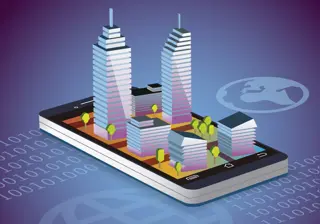Turning Pages: Chennai Real Estate's Move to Sensorless Tech

In 2025, Chennai's real estate scene is seeing a quiet revolution. Developers and property managers are adopting sensorless technology a breakthrough that removes traditional sensors entirely to optimize energy use, streamline building operations, and redefine urban living standards. This innovation marks a bold step beyond conventional IoT systems, blending AI, advanced algorithms, and predictive analytics to create smart, self-adaptive spaces.
Key Innovations in Sensorless Tech
AI-Powered Energy Management
Sensorless systems use machine learning models to predict and adjust energy usage patterns. These systems analyze historical data like occupancy trends, equipment performance, and seasonal climate changes to dynamically allocate resources. For example, HVAC systems might automatically reduce cooling in underused areas, while lighting systems dim based on daylight availability or occupancy, all without relying on physical motion sensors.
Automated Resource Monitoring
Traditional sensor-based systems track variables like temperature, humidity, and air quality. Sensorless alternatives leverage existing infrastructure (e.g., power meters, smart devices) to infer real-time conditions. This approach reduces hardware costs while enabling granular insights, such as detecting anomalies in water usage patterns or predicting appliance failures before they occur.
Integration with Existing Systems
Developers are retrofitting older buildings with sensorless platforms, integrating them with legacy systems like solar grids, smart meters, and IoT devices. For instance, in mixed-use complexes, sensorless tech might orchestrate energy sharing between residential and commercial units, balancing demand and supply efficiently.
Benefits of Sensorless Integration
Cost Savings Eliminating sensor installations lowers upfront expenses. Maintenance costs drop as there’s no need to replace hardware components.
Enhanced Precision AI models provide more accurate insights than physical sensors, which can be affected by dust, tampering, or environmental interference.
Sustainability Automated optimization aligns with Chennai’s green-building goals, potentially cutting energy waste by 15–20% in commercial buildings.
Scalability Sensorless systems adapt seamlessly to evolving needs, making them ideal for Chennai’s rapidly growing urban populations.
Challenges and Future Outlook
While promising, this shift faces hurdles:
- Data Privacy Concerns: Gathering user data raises questions about tenant consent and GDPR compliance.
- Resistance to Change: Traditional stakeholders may hesitate to adopt untested technologies.
- Infrastructure Gaps: Older buildings and apartments needs to be upgraded with smart technology.
Proponents argue these challenges will dissolve as adoption grows. Chennai’s proactive builder community mirroring trends in tier-2 cities like Indore and Coimbatore, where digital ProTech platforms are now standard could pilot these solutions first.
In the long term, sensorless technology could merge with blockchain for transparent resource auditing and with 5G networks for real-time decision-making. Chennai’s goal to become a smart city makes it a prime candidate to lead this transformation.
The Verdict: Sensorless technology isn’t just a gadget it’s a strategic leap toward creating energy-conscious, future-ready urban ecosystems. For Chennai, this means redefining what it means to call a city home.